This is what air travel will look like in 2030
A glimpse into the future of passenger flight
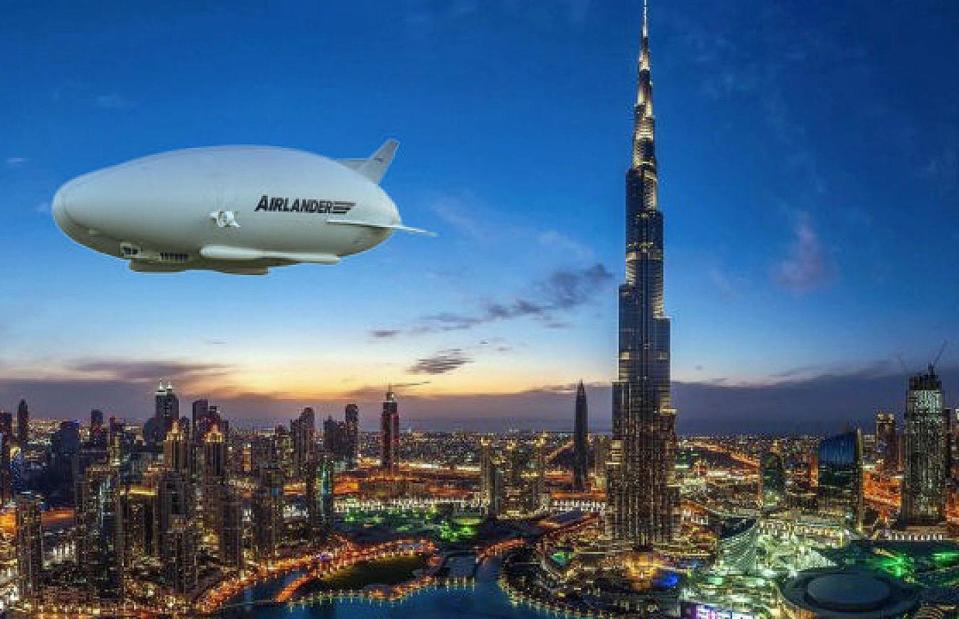
Courtesy of Hybrid Air Vehicles
Pilotless air taxis, robot-controlled airports and glass-bottomed airships may seem like the stuff of science fiction, but these futuristic technologies could be at an airport near you by as soon as 2030.
Peering into the not-so-distant future, we reveal how you could be travelling just six years from now....
Pilotless air taxis
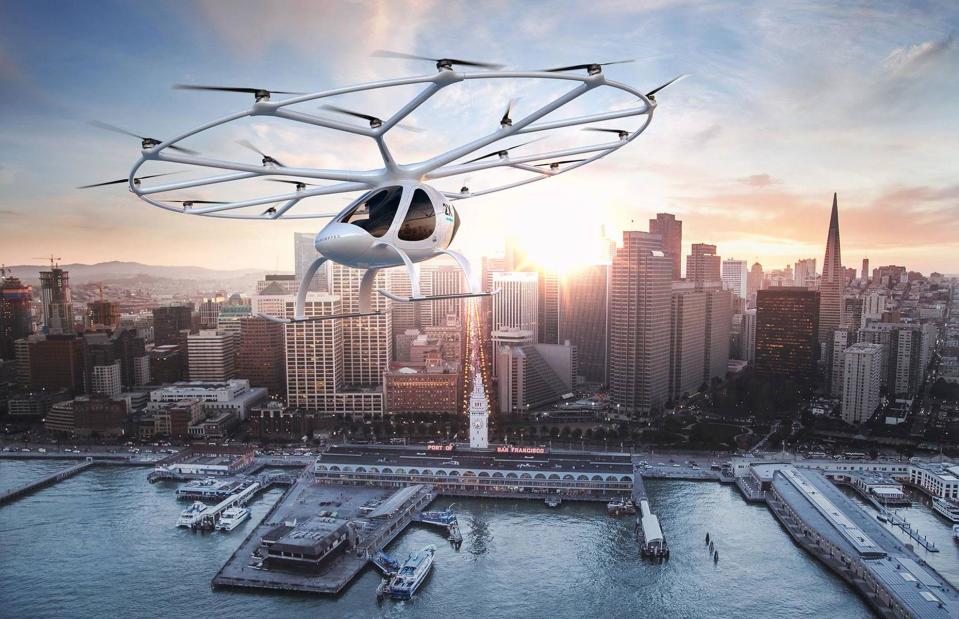
Courtesy of Volocopter
It's a sweltering afternoon in 2030 and you're running late for your flight. Thankfully, you can ditch the rushed and sweaty dash on public transport or sluggish car journey on gridlocked roads and jump in one of the many climate-controlled pilotless air taxis that are now commonplace in your city.
Pilotless air taxis
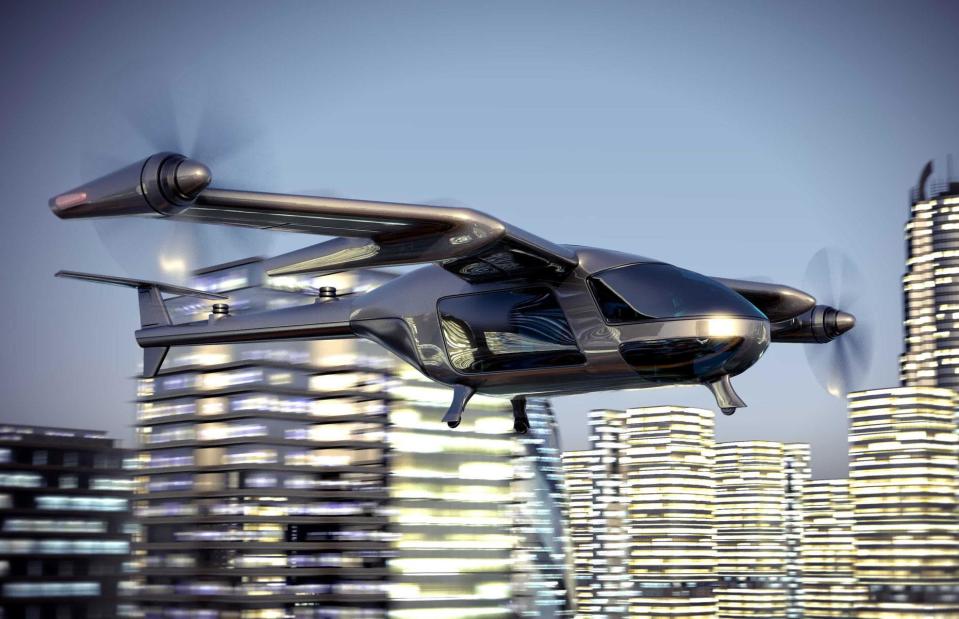
U3d/Shutterstock
Rest-assured, the air taxi will whisk you to the airport in no time. Although regulation could be a stumbling block, right now, a slew of start-ups and more established firms are scrambling to launch the world's debut air taxi service.
Pilotless air taxis
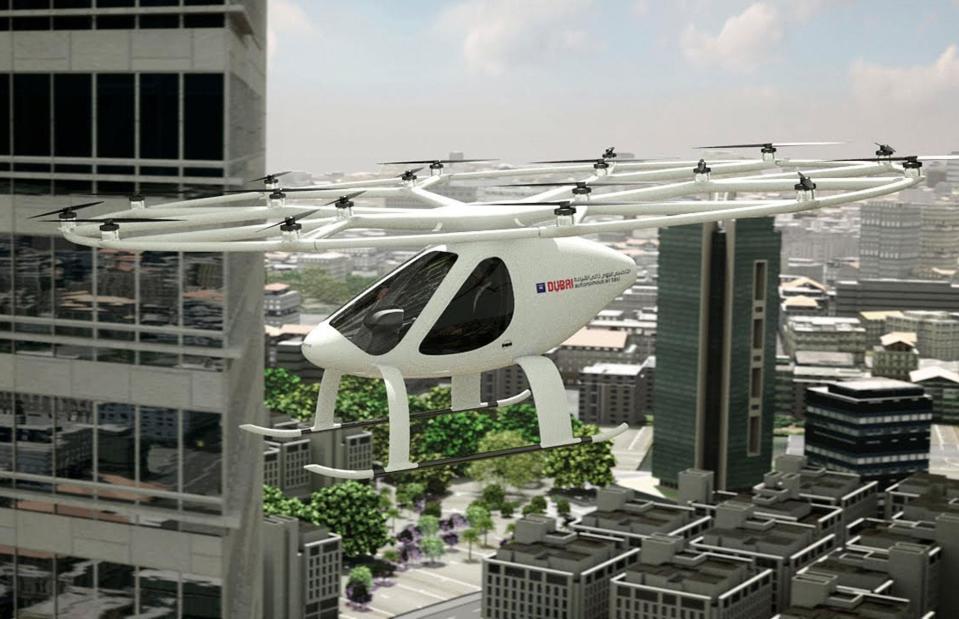
Courtesy of Volocopter
Dubai is set to be the first city to boast a fleet of air taxis. The first manned test flights of the German-made Volocopter were performed back in 2016 and they've continued to perform test flights all over the world. Over in the US, Joby Aviation made the first ever electric air taxi flight in New York in November 2023. Joby's electric vertical take-off and landing (eVTOL) aircraft were found by NASA to be quieter than a typical conversation, which will limit noise pollution for future flights.
Pilotless air taxis
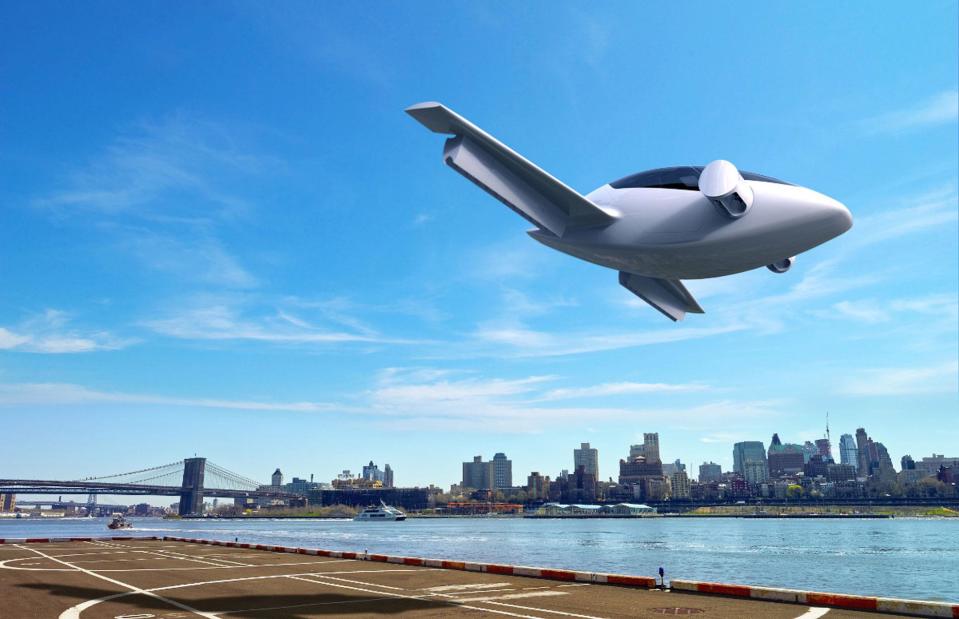
Courtesy of Lilium
In 2019, German company Lilium nailed the first successful test flight of its five-seater self-flying air taxi. Just four years later, the firm became the first to offer eVTOL jets for private sale in the US. Moving at pace, in January 2024 they announced a collaboration with airport operator Fraport, to explore the next steps for commercial eVTOL operations at airports. A big selling point, the aircrafts hope to be able to fly from Manhattan to JFK International Airport in just five minutes.
Pilotless air taxis
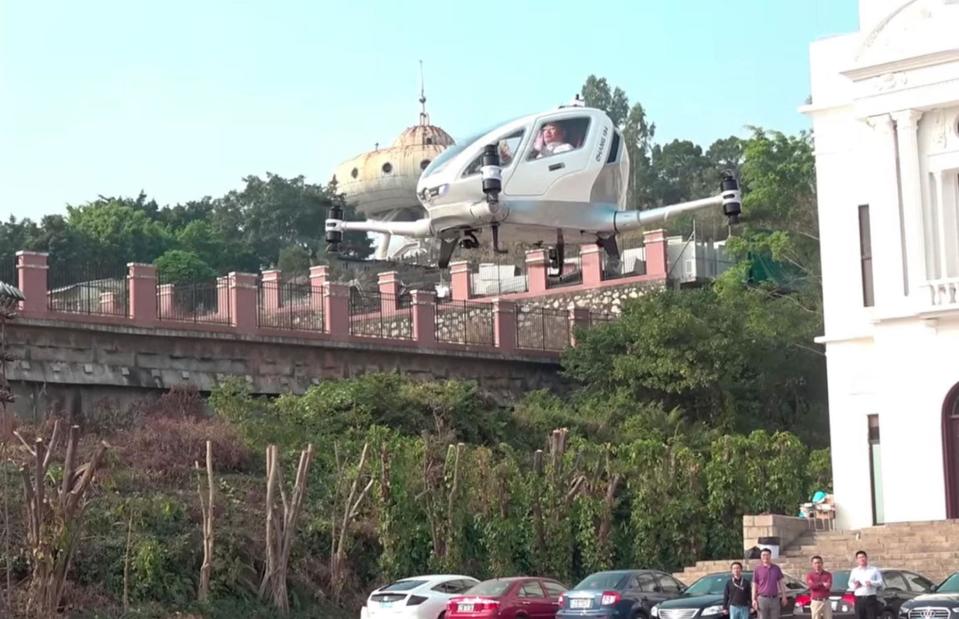
Courtesy of Ehang
Yet another autonomous eVTOL, the Ehang 184, first took to the skies for manned test flights in Lianyungang, China in February 2018. Fast forward to December 2023 and Ehang's EH216-S pilotless passenger-carrying aerial vehicle completed its first commercial flight demos in the Chinese cities of Guangzhou and Hefei.
Automated airports
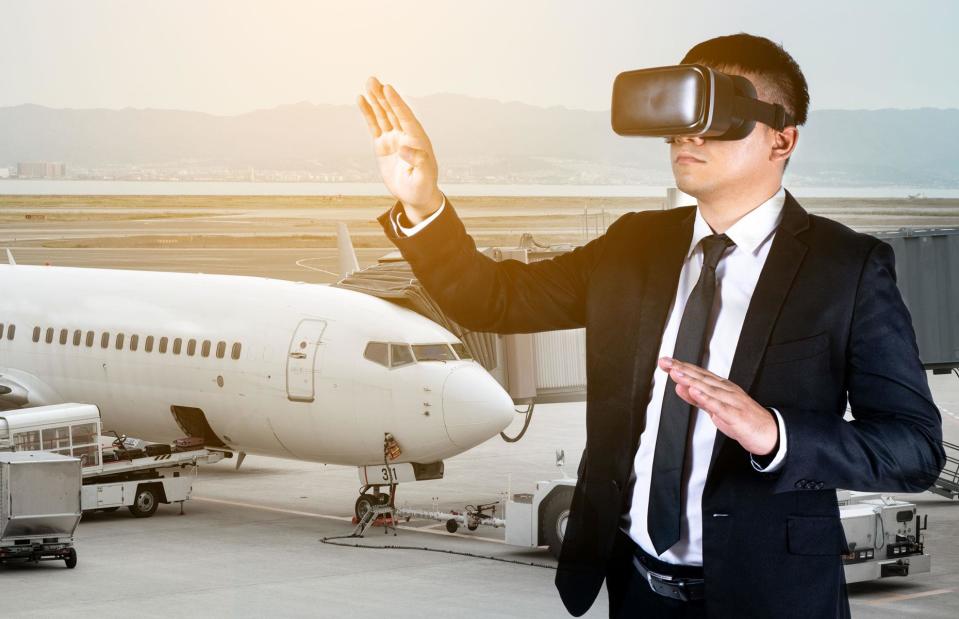
Longchalerm Rungruang/Shutterstock
Back to that heatwave afternoon in 2030. You've arrived at the airport and thanks to the speedy air taxi journey, have plenty of time to kill. You've got time to hang out for a while in the virtual reality space and explore your destination, because checking in your suitcase is now a breeze...
Automated airports
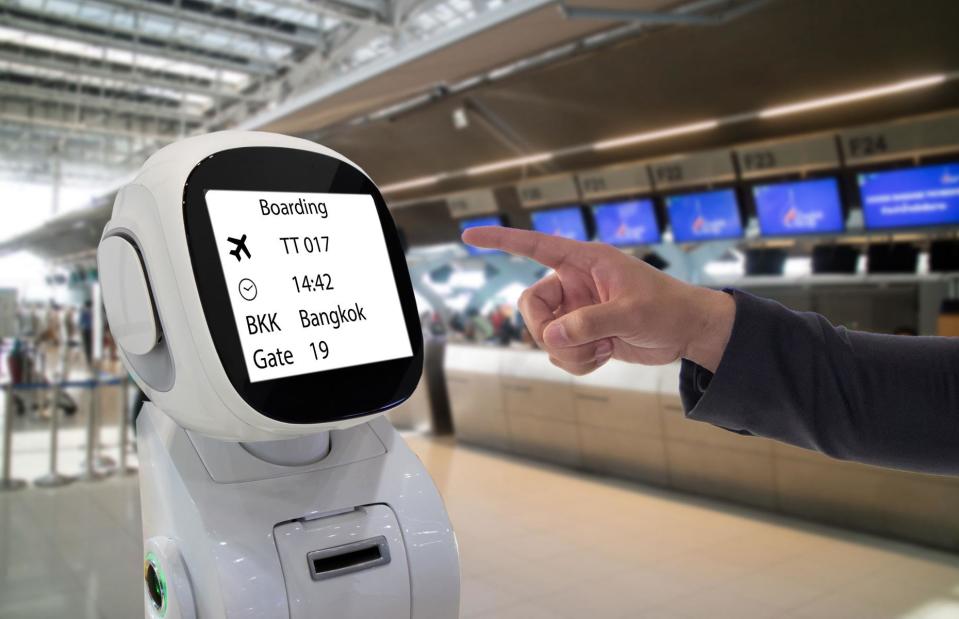
Monopoly919/Shutterstock
You simply approach one of the many check-in robots – who greets you by your name after remote scanning the biometric chip in your passport – and you'll be relieved of your case. Looking around the airport, there are very few human staff members milling around.
Automated airports
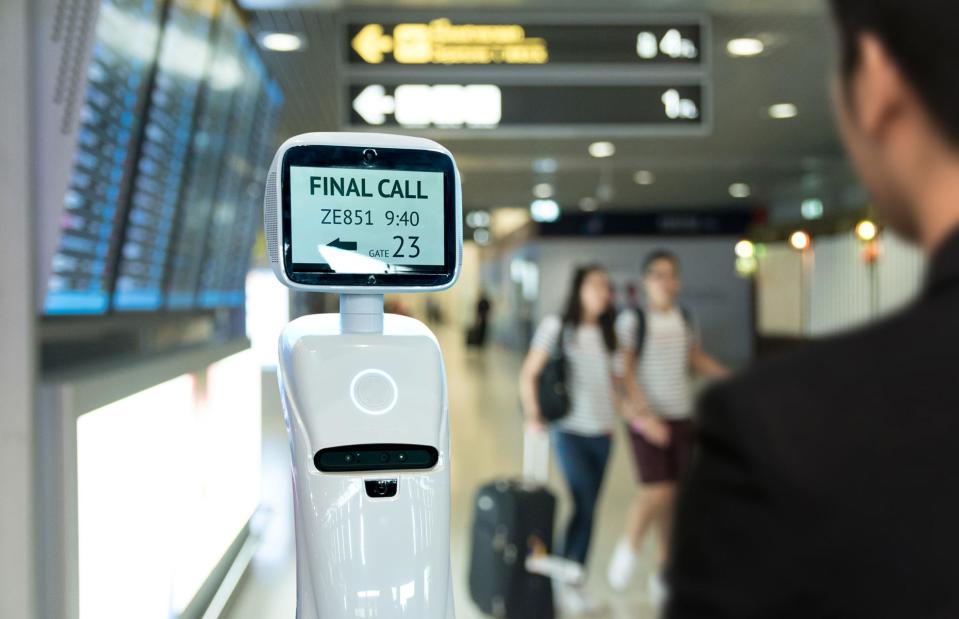
Zapp2Photo/Shutterstock
Automatons are absolutely everywhere, from friendly check-in robots to information-giving, food-serving and cleaning androids. According to one 2021 study, almost half of global airlines and 32% of airports were looking for partners to develop their robotic involvement. But the future is already here. Dubai International Airport already uses 122 Smart Gates, which use face and iris recognition to reduce passport control procedures to just five seconds.
Automated airports
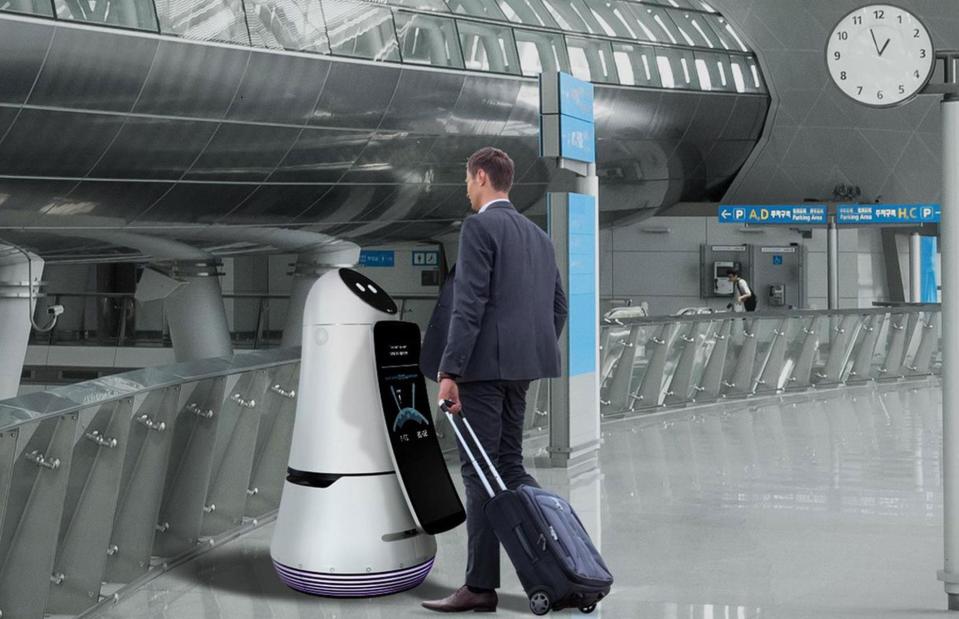
Courtesy of LG
The rise of the airport robots has already begun. Since 2018, Kansai Airport in Japan has had an intelligent check-in robot called KATE, while Geneva Airport has launched Leo, a helpful bag drop bot, and hard-working LG automatons clean South Korea's Incheon Airport and assist passengers.
Automated airports
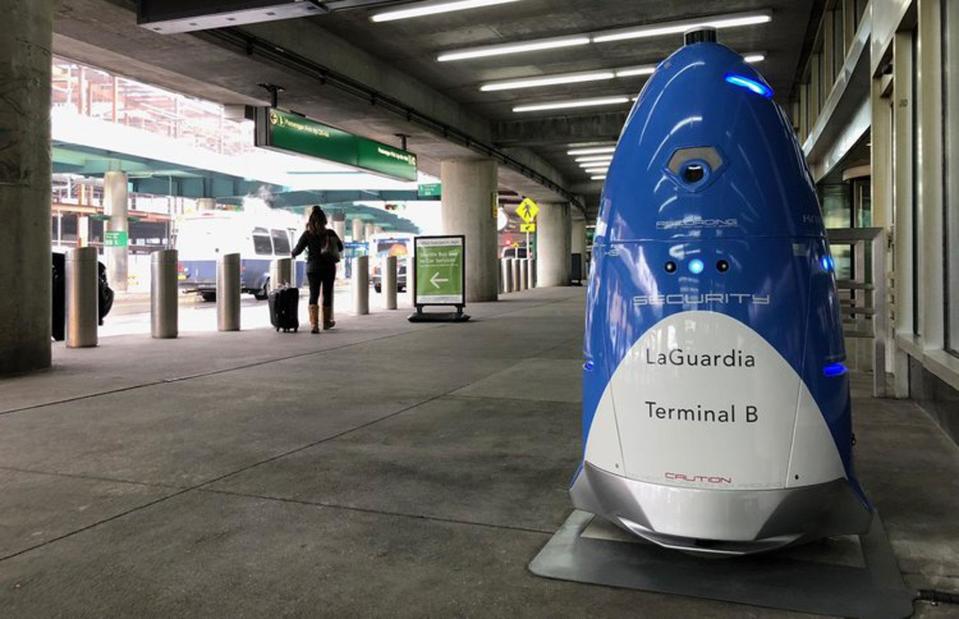
Courtesy of Knightscope
Elsewhere, New York's La Guardia has a robot that patrols Terminal B. The droid is packed with surveillance cameras and sensors to monitor the terminal, watch out for potential threats and help keep passengers and staff safe. Meanwhile, in 2021, Kansai Airport in Japan added two security robots to their staff to patrol certain routes, guard designated positions and capture images on built-in cameras.
Automated airports
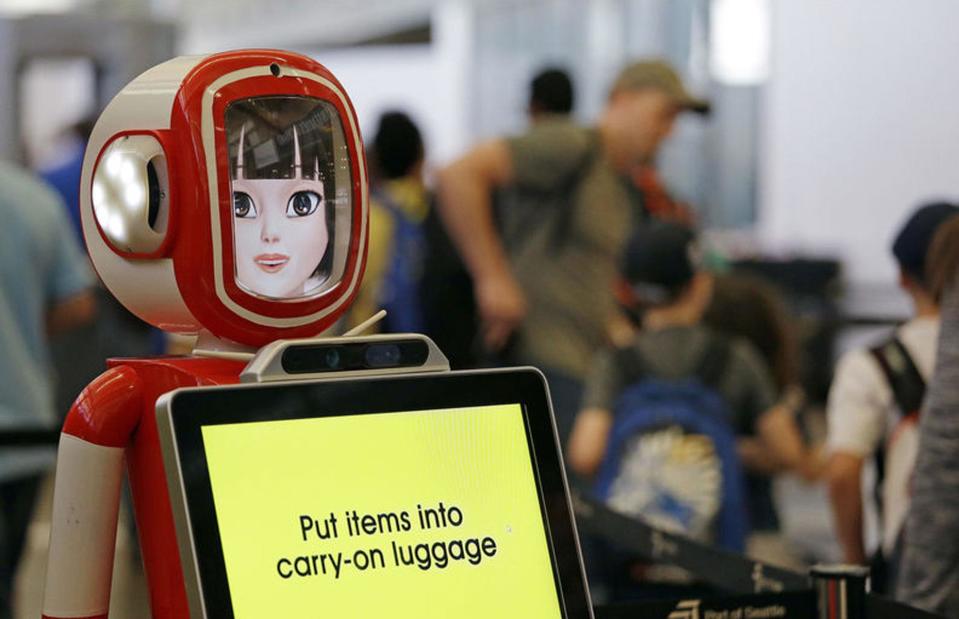
Courtesy of Port of Seattle
Robots will look after airport security checkpoints, too. The process is expected to become much faster, with extensive use of futuristic tech such as artificial intelligence, retinal and fingerprint scanning and facial recognition. Boarding is also set to change. SITA's 2023 Air Transport IT Insights review has predicted that 82% of airlines will use biometric-enabled identity technologies for aircraft boarding by the end of 2026.
Hybrid and all-electric planes
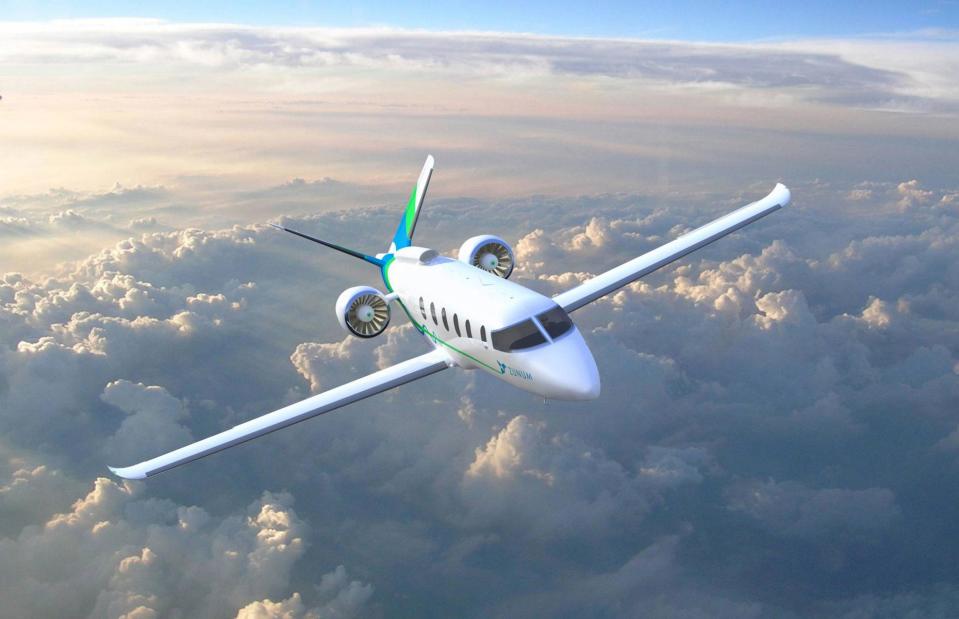
Courtesy of Zunum Aero
So, you've cleared security and made it through the departure gate. Out on the runway, the tarmac is almost melting in the heat. The effects of climate change are more pronounced now. Fortunately, low and zero-emission hybrid and all-electric planes are becoming more and more common in 2030.
Hybrid and all-electric planes
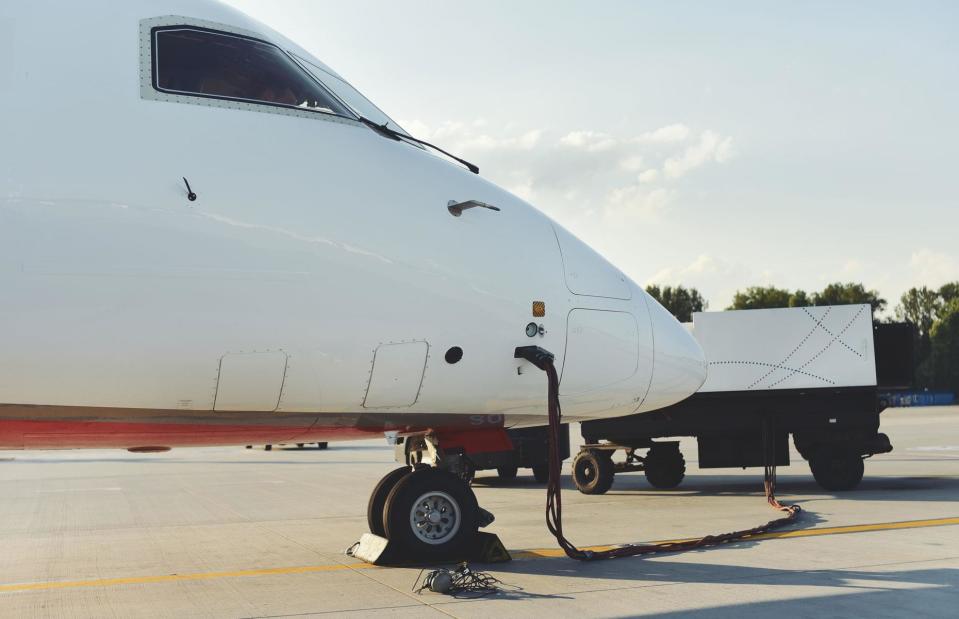
Irbis Pictures/Shutterstock
Limiting or doing away with conventional jet fuels entirely, these aircraft are partly or entirely battery-powered, and are much cheaper to run, which should help bring down airfares – an added bonus.
Hybrid and all-electric planes
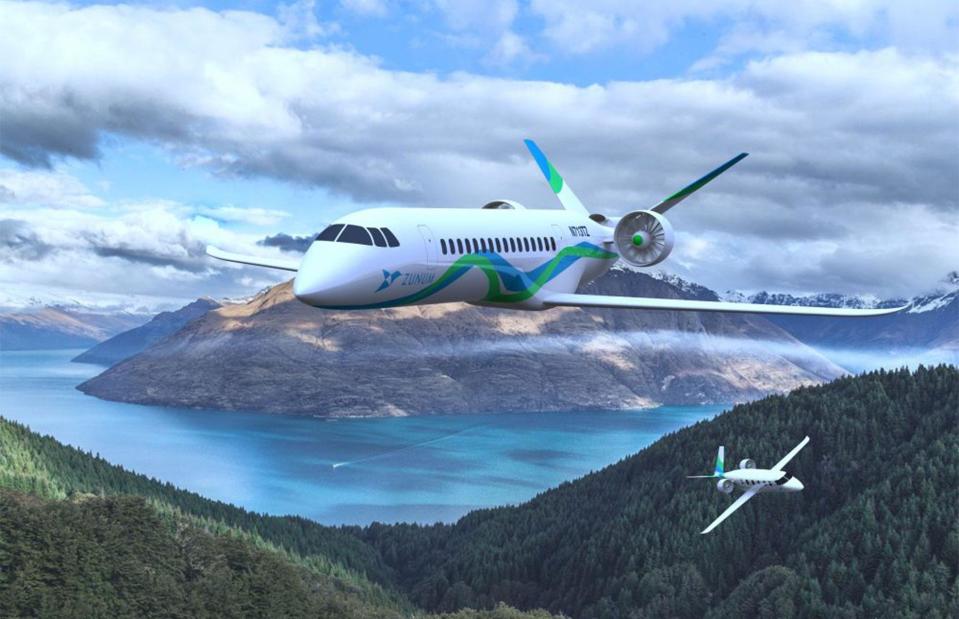
Courtesy of Zunum Aero
Experts believe hybrid and fully battery-powered planes, which offer less range than conventional aircraft, will begin to dominate the short-haul flight sector in the 2030s, becoming the go-to aircraft for flights under three hours.
Hybrid and all-electric planes
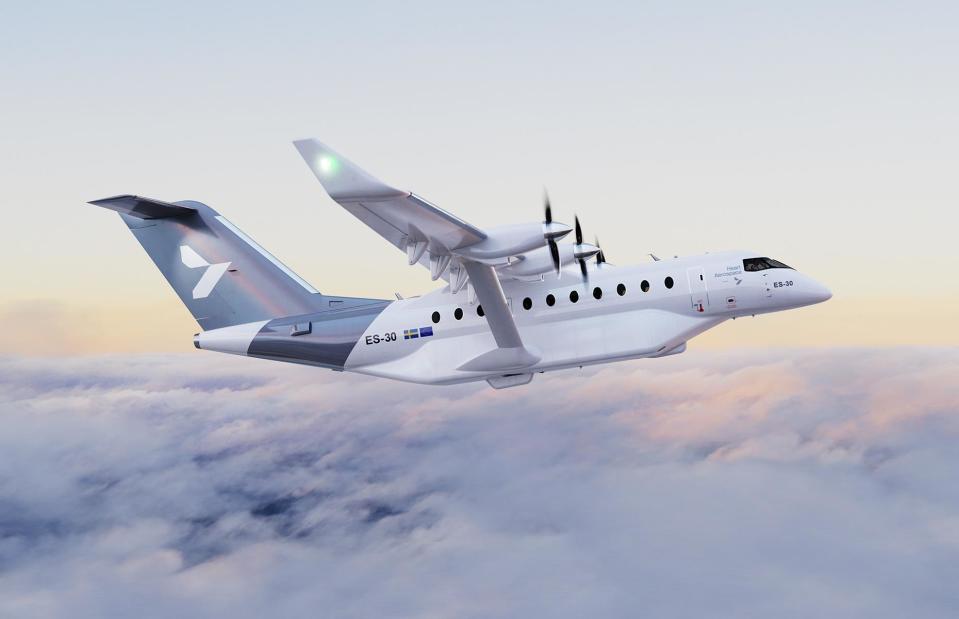
Heart Aerospace
In February 2024, both United and Air Canada increased their funding to Sweden's Heart Aerospace, who are developing the ES-30 (pictured), a hybrid-electric regional aircraft. Expected to enter service around 2028, there are currently 250 orders for the ES-30 – including 30 from Air Canada.
Hybrid and all-electric planes

Paul Christian Gordon/Alamy Stock Photo
MagniX, based in Washington State, is developing not one but three alternative energy aircraft, with battery electric, hybrid electric and hydrogen electric offerings. Back in 2020, its modified Cessna became the world's largest all-electric plane to take flight. Two years later, it flew its first all-electric helicopter and its Eviation Alice aircraft (pictured) took to the skies in a world first for an electric commuter plane. Most recently, in 2023, MagniX broke records when its DHC8-Q300 became the world's largest flight-tested hydrogen electric plane.
Hybrid and all-electric planes
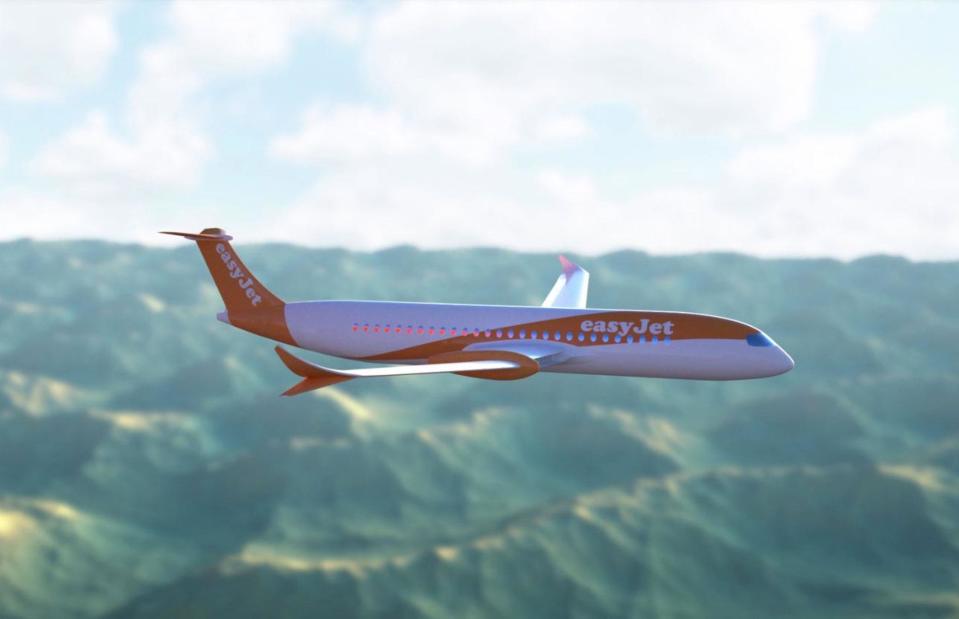
Courtesy of Wright Electric/EasyJet
All-electric planes are also being developed by Californian start-up Wright Electric, which is partnering with European budget-carrier easyJet. They completed successful maiden flights of their hybrid-electric crop duster aircraft in November 2023. Meanwhile, a network of electric aircraft could take to the skies in Norway from as early as 2028.
Luxury airships
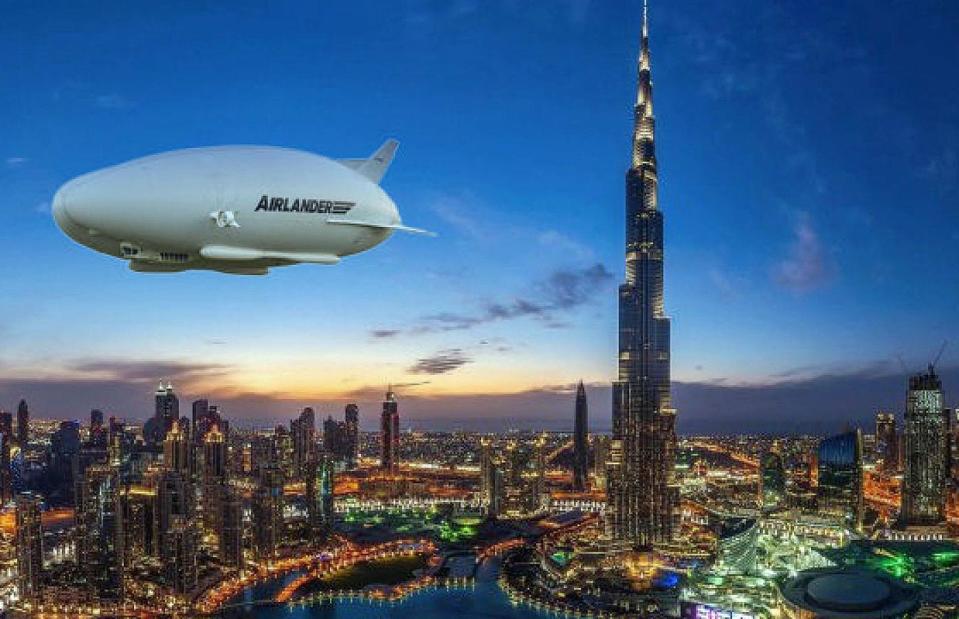
Courtesy of Hybrid Air Vehicles
If you're flying for leisure, you could always book a relaxing air cruise on one of the luxury airships that are set to become all the rage by 2030.
Luxury airships
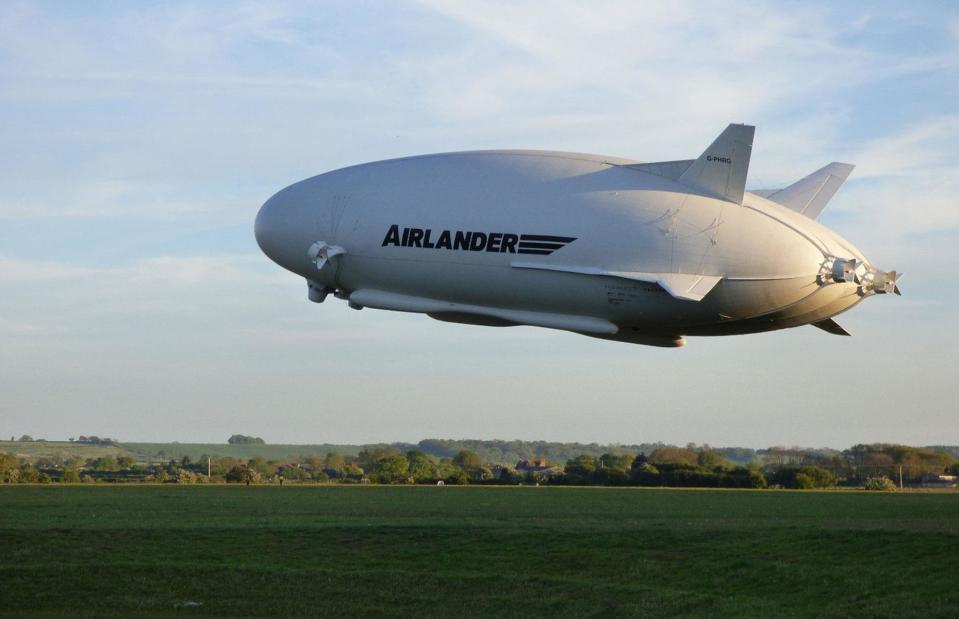
Courtesy of Hybrid Air Vehicles
Unlike the ill-fated airships of the early 20th century, these hyper-efficient hybrid aircraft run on helium and jet fuel rather than notoriously unstable hydrogen. At the current time, the jaw-dropping Airlander 10 is leading the way.
Luxury airships
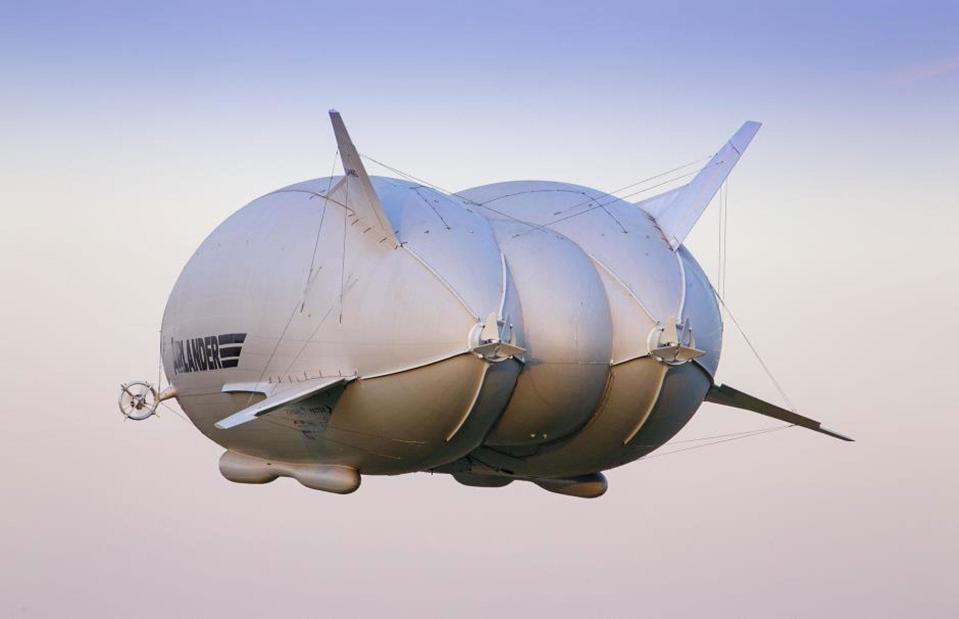
Courtesy of Hybrid Air Vehicles
Developed by British firm Hybrid Air Vehicles (HAV), the bloated aircraft, dubbed 'the flying bum' for obvious reasons, first took to the skies in 2012 and is one of the world's longest aircrafts at 299 feet (99m), about the size of a football pitch. Unlike conventional aircraft, the Airlander 10 can stay airborne for up to five days.
Luxury airships
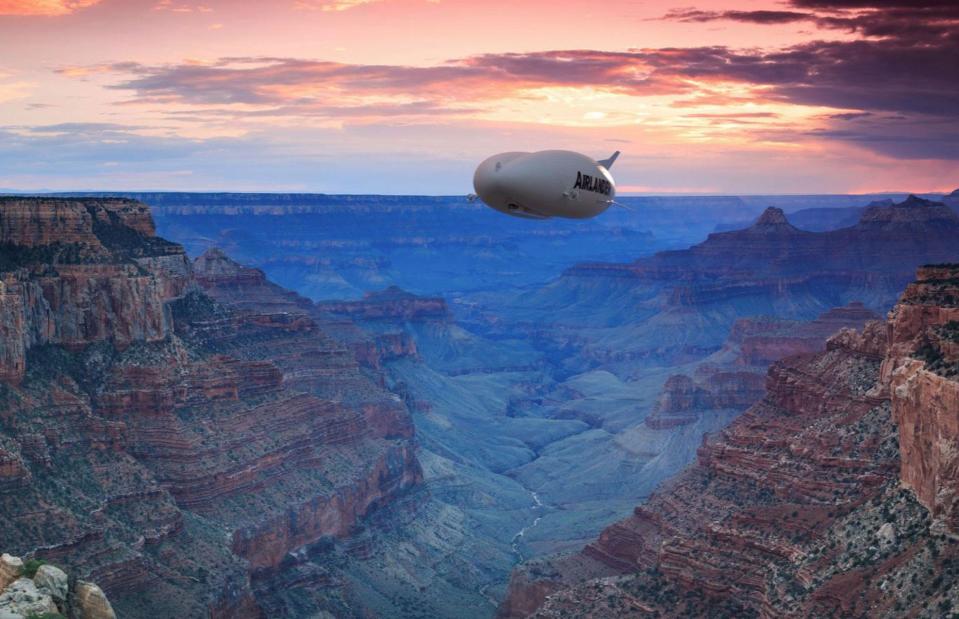
Courtesy of Hybrid Air Vehicles
The hybrid aircraft cruises at speeds of just 80 mph (130km/h) at a max altitude of 20,000 feet (6,000m) right down to only 1,000 feet (305m), so it's ideal for sightseeing, and passengers will even be able to open the windows for fresh air.
Luxury airships
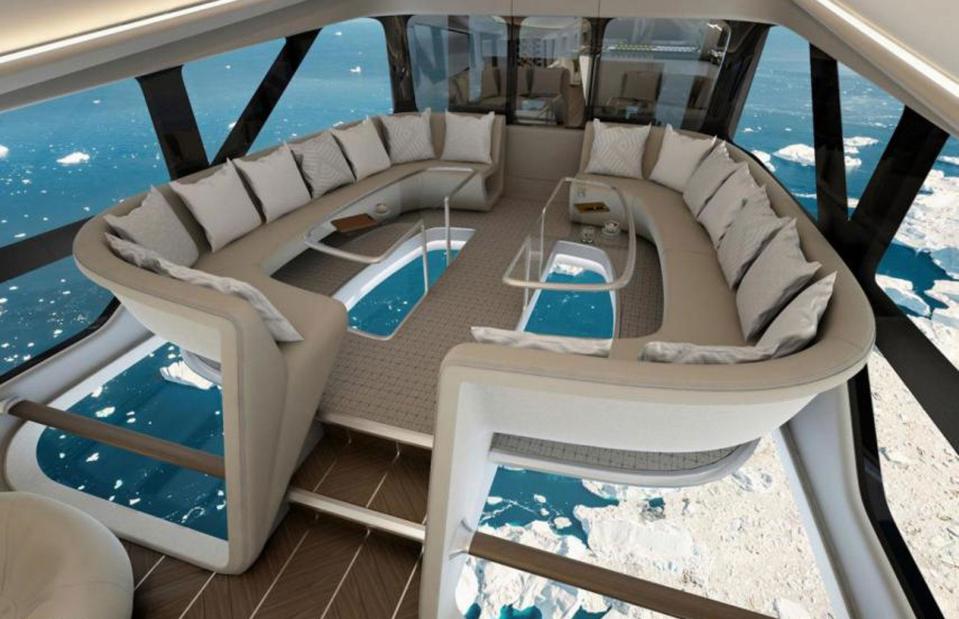
Courtesy of Hybrid Air Vehicles
In February 2023, HAV announced the Airlander 10 was ready for commercial production. The early models will provide a 75% reduction in carbon emissions, while electric motors will be introduced in 2028, cutting emissions by a massive 90%. By 2030, all four engines will be electric, making it a zero-emissions aircraft.
Luxury airships
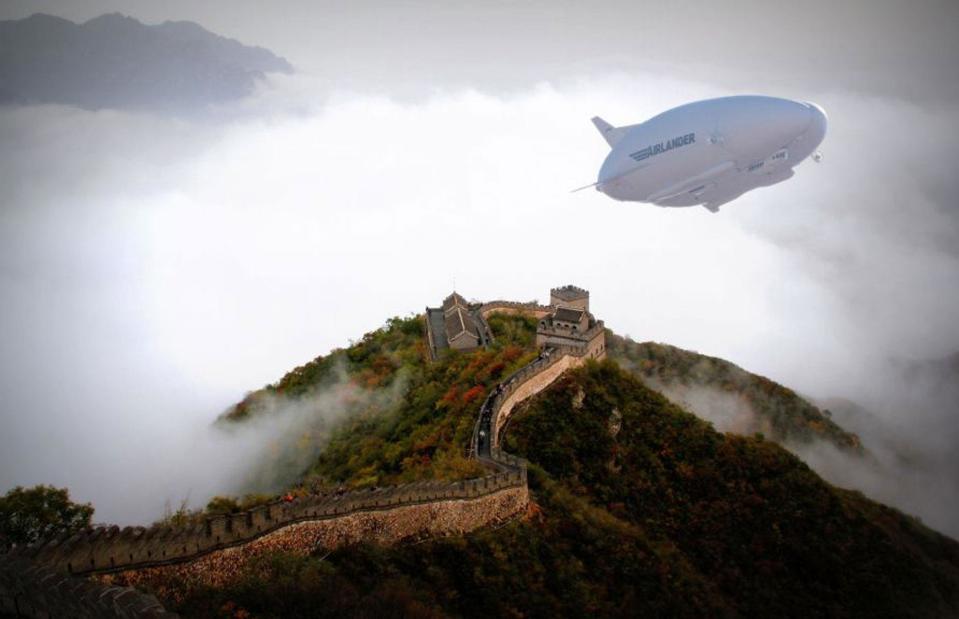
Courtesy of Hybrid Air Vehicles
Thanks to HAV and other industry leaders like LTA Research, Zeppelin Luftschifftechnik, Flying Whales and H2 Clipper Inc., airship travel is much closer than you think. Just imagine peacefully floating over the Great Wall of China, Amazon rainforest or Grand Canyon on a multi-day air cruise. Expect to pay what you would for a luxury ocean cruise of similar duration.
Supersonic jets
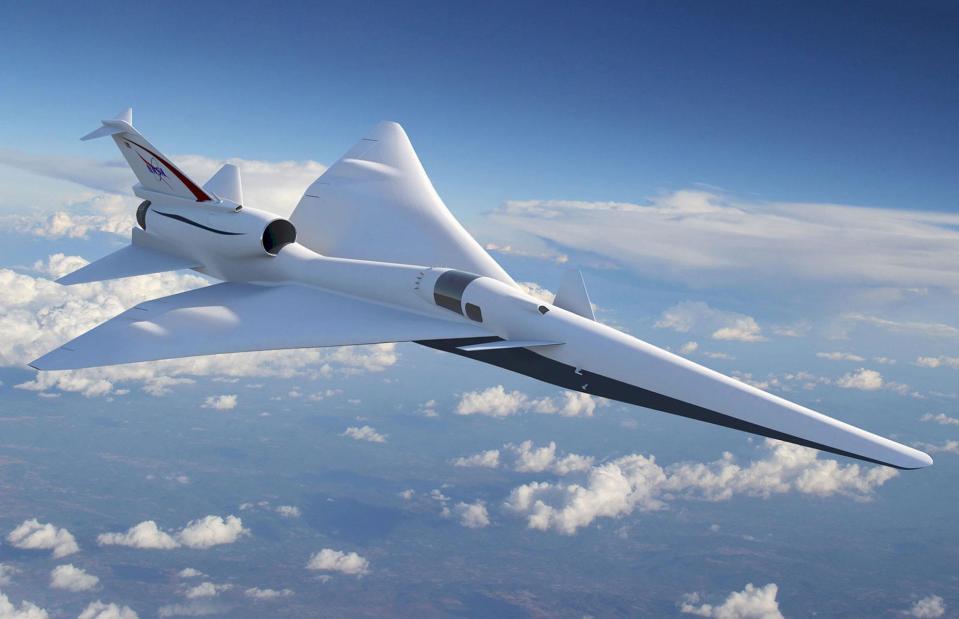
Courtesy of NASA
Fast-forward again to 2030 and you're about to board a plane. You're travelling long-haul, but the flight won't take more than a few hours because you're flying to your destination at supersonic speed.
Supersonic jets
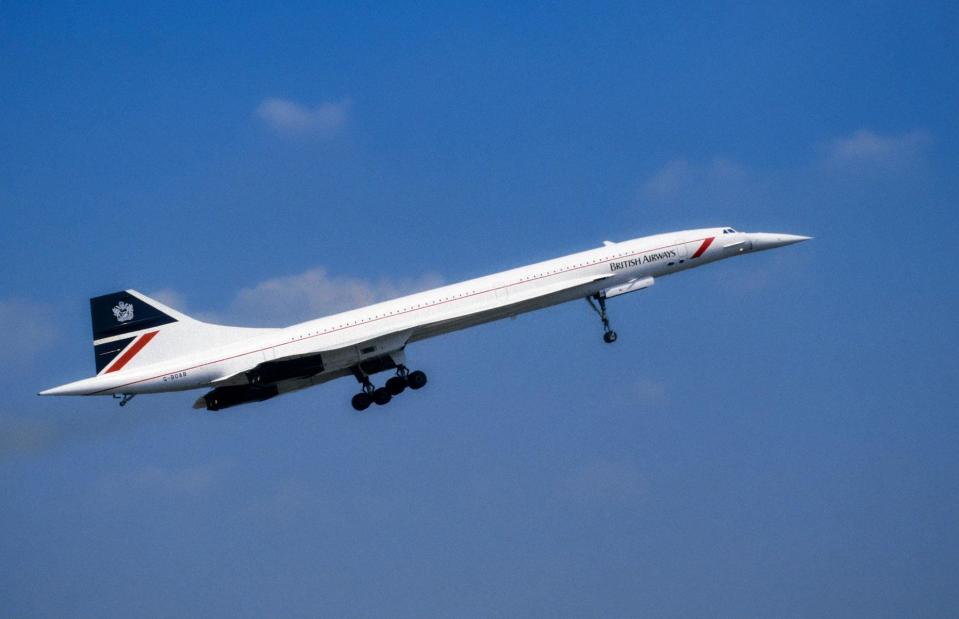
John Selway/Shutterstock
Concorde famously ceased operations in 2003, but supersonic and even hypersonic planes are poised to make a big comeback. Several key aerospace companies are developing a new generation of quiet, fuel-efficient, ultra-fast planes.
Supersonic jets
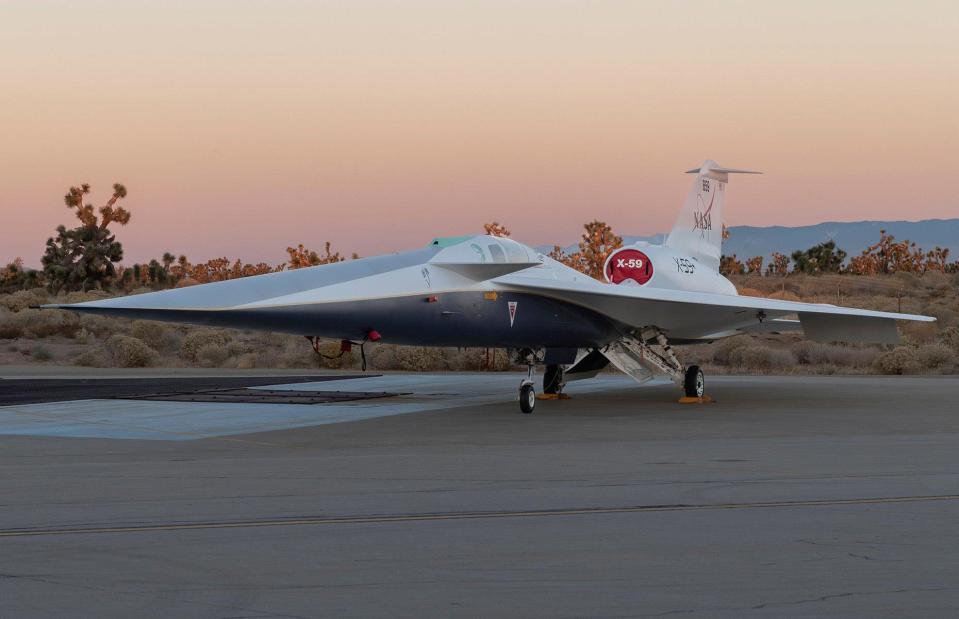
UPI/Alamy Stock Photo
In January 2024, Lockheed Martin and NASA formally debuted their X-59 quiet supersonic aircraft. In just a few short years, it's gone from an ambitious concept to firm reality. The X-59 is expected to fly at 1.4 times the speed of sound, or 925 miles per hour (1,488 km/h) while generating a quieter sonic thump, rather than a sonic boom.
Supersonic jets

Courtesy of Boom Supersonic
Denver-based Boom Supersonic is working on Overture, a supersonic passenger aircraft expected to fly at speeds up to Mach 1.7, which is about 1,300 miles per hour (2,092km/h), halving current flight times. In August 2023, American Airlines committed to buying 20 of the super-fast planes, while United is slated to buy 15. If development stays on track, Booms plans to return commercial supersonic flights to the skies in 2029.
Supersonic jets
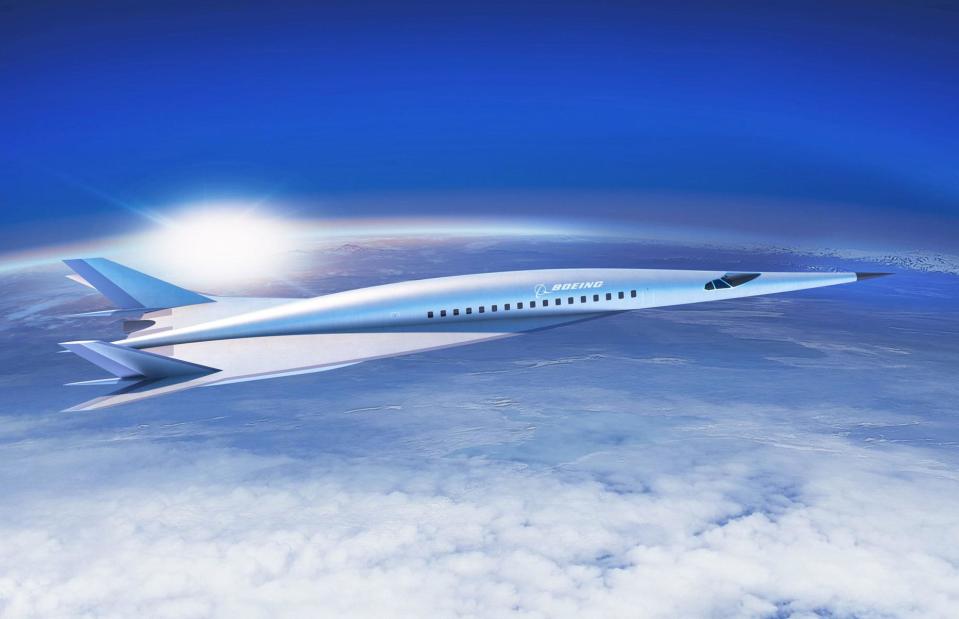
Courtesy of Boeing
Looking further ahead, Boeing has teamed up with NASA to plan a full-size passenger plane that could fly at Mach 4 – four times the speed of sound. Today's larger airliners fly at about 80% of the speed of sound (roughly 600 miles per hour/966km/h) so you could theoretically hop from London to New York in just over two hours.
Windowless cabins and more
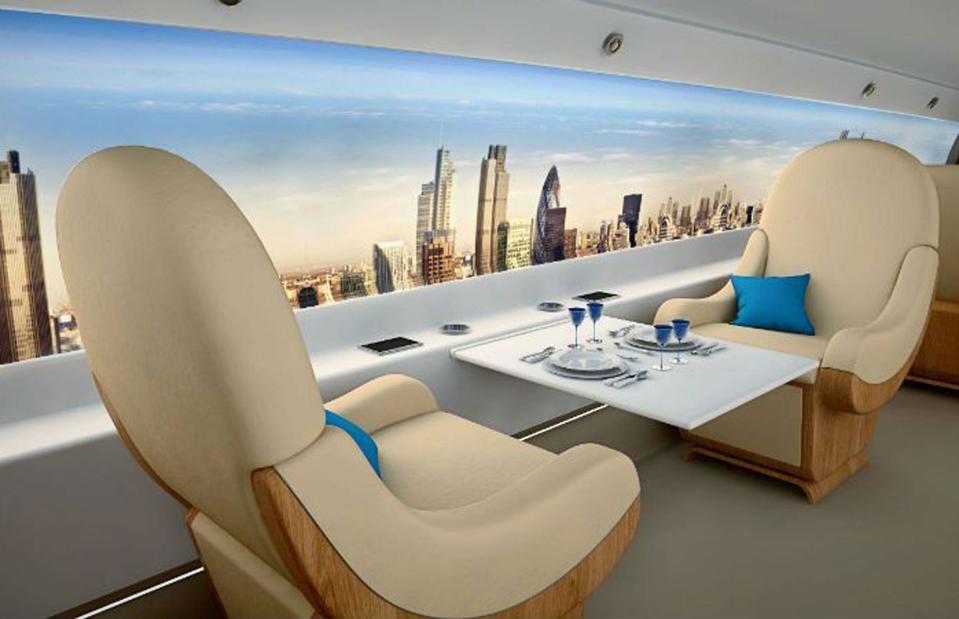
Courtesy of Spike Aerospace
The supersonic jet you're travelling on in 2030 is remarkable enough, but you're most impressed by the windowless cabin. By taking out the windows, designers can make planes faster and more energy efficient.
Windowless cabins and more
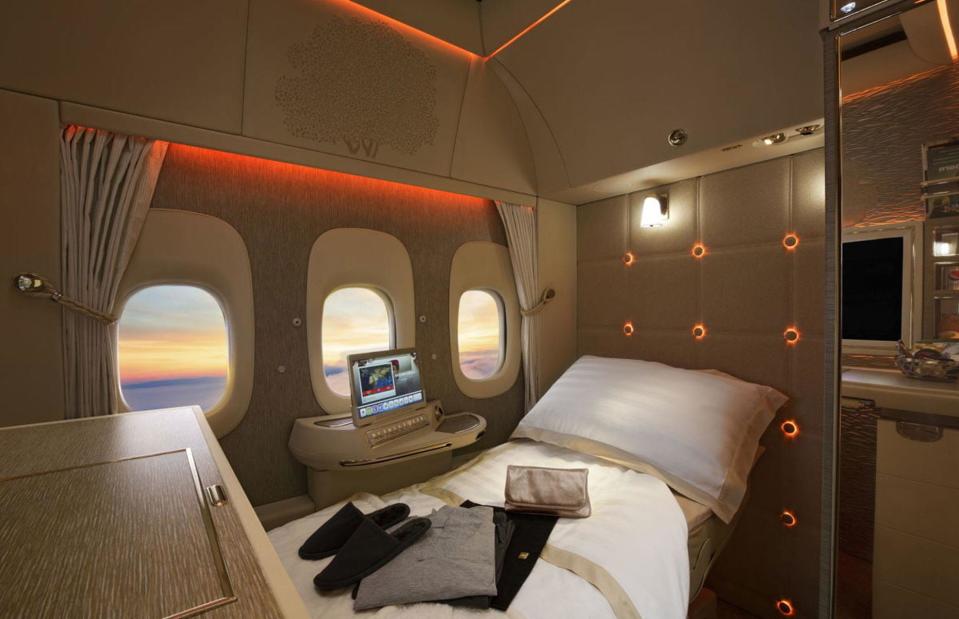
Courtesy of Emirates Airline
Emirates is the trailblazer. Way back in 2017, the Dubai-headquartered airline replaced windows in the first class cabin of its new Boeing 777-300ER aircraft with digital displays that show images from outside the plane.
Windowless cabins and more

Courtesy of Centre for Process Innovation
These virtual windows could also project calming landscape scenes and even show movies. Expect other airlines to follow suit, though the lack of real windows may take some getting used to, and could make the flying experience feel rather claustrophobic.
Windowless cabins and more
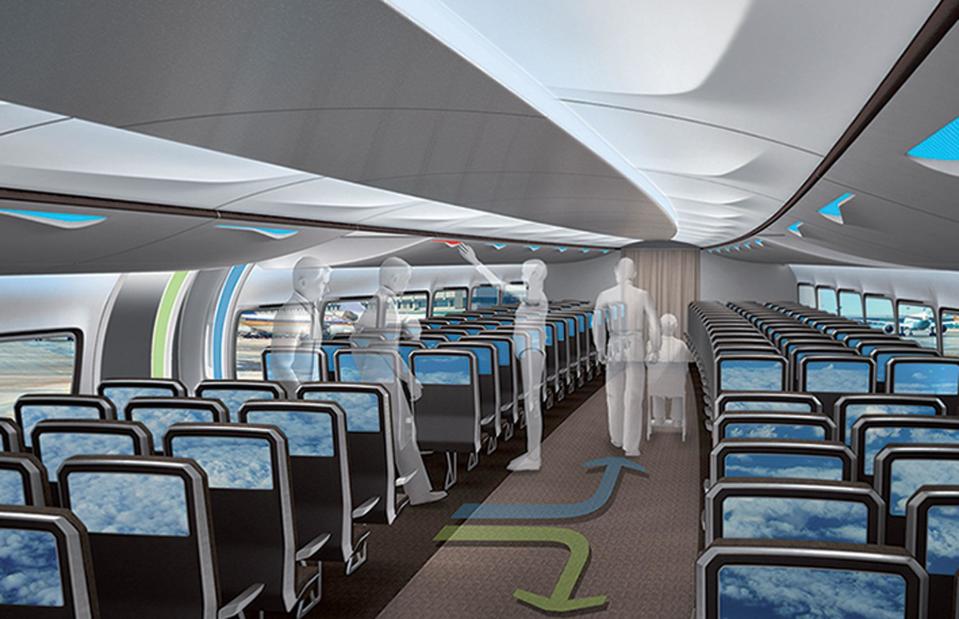
Courtesy of Ugur Ipek Design
In addition to lacking proper windows, newer aircraft in 2030 and beyond could be accessed by large hotel-style double doors at the centre of the plane, such as this design patented by Airbus in 2015. The new model could revolutionise the boarding process, significantly speeding it up.
Windowless cabins and more
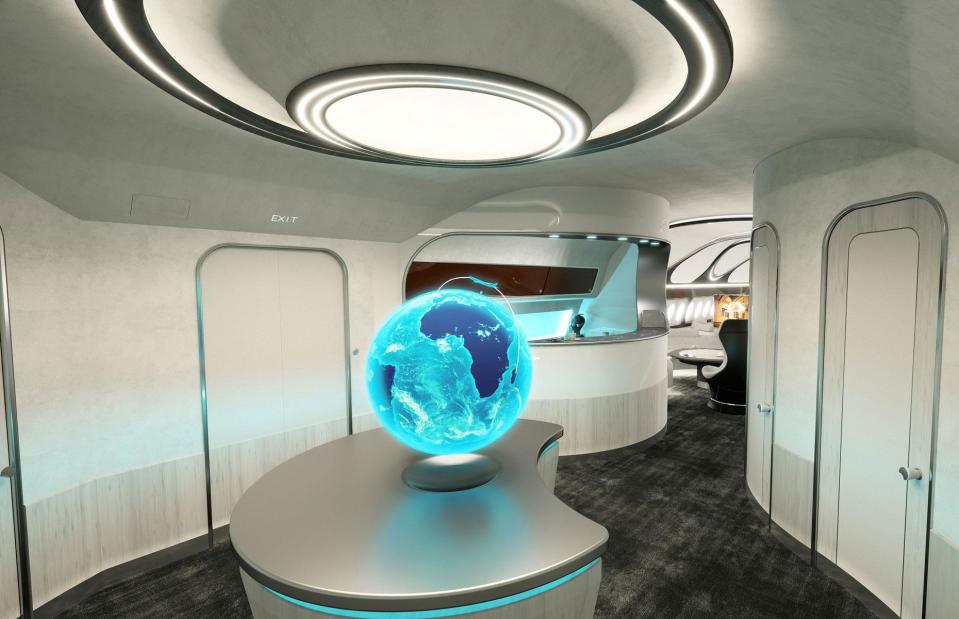
Courtesy of Airbus
Passengers will enjoy relaxing mood lighting, comfier seating and futuristic touches. By way of example, the Harmony cabin by Airbus will feature a sci-fi-worthy holographic globe that shows the precise position of the aircraft over Earth. The height of luxury, it will also feature a spacious lounge with seating grouped at round-tables that encourage social interaction.
Windowless cabins and more
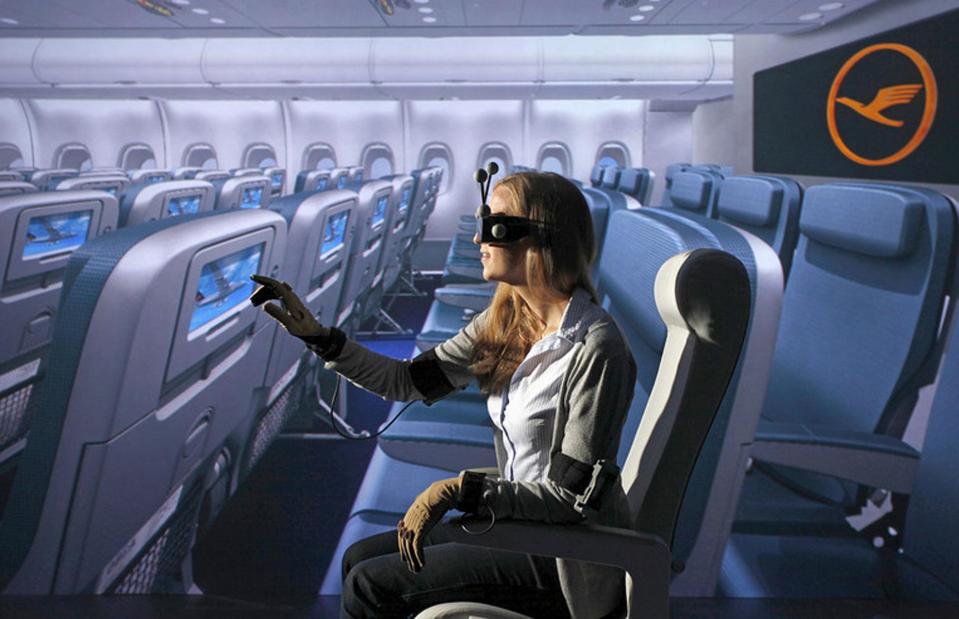
Courtesy of Lufthansa
Robot flight attendants could start to appear on our flights by 2030, as could other cutting-edge technologies, from wearable tech that monitors your in-flight health, to virtual reality experiences, super-fast wifi and antiviral air conditioning. One thing's for sure – air travel will be transformed spectacularly in the coming years.

